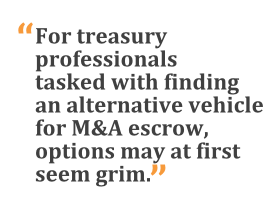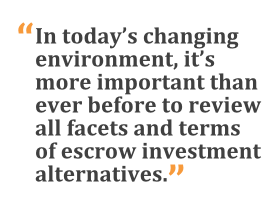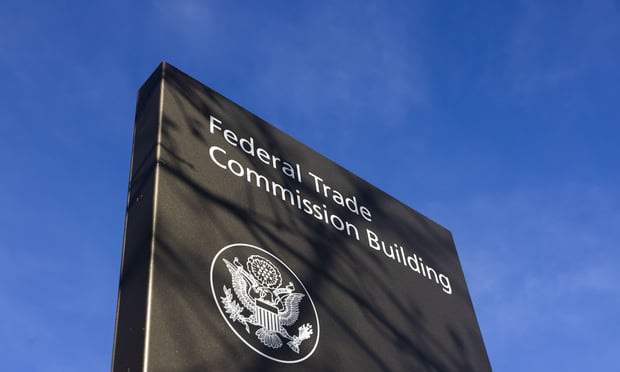 Too often, corporate treasury professionals are brought tothe table late in merger and acquisition (M&A) transactions.While parties to the deal are focused on tense negotiations, thetreasurer may remain mostly off the radar. Then he or she mayfinally be brought into the loop near the end of the discussions,at which point the treasury team has insufficient time for planningthe post-merger transition.
Too often, corporate treasury professionals are brought tothe table late in merger and acquisition (M&A) transactions.While parties to the deal are focused on tense negotiations, thetreasurer may remain mostly off the radar. Then he or she mayfinally be brought into the loop near the end of the discussions,at which point the treasury team has insufficient time for planningthe post-merger transition.
However, one key area in which treasury can plan adequately inadvance and from a distance is M&A escrows. Typically relegatedto the back burner in the midst of a transaction, escrows haveincreasingly become a point of focus among treasurers given newregulatory changes and emerging investment options.
|M&A escrow accounts are formed to hold a portion of theagreed-upon purchase price in escrow as protection against certainpotential losses. For example, if the selling company misrepresentssome fact about its business, or if it fails to perform a requiredtask prior to closing, the buyer could regain any losses by makinga claim against the escrow account rather than filing a lawsuitagainst the acquired company's former shareholders. The duration ofa typical M&A escrow is 12 to 24 months. In some cases, thatterm is extended if indemnification claims are made under themerger or acquisition agreement.
|When it comes to planning for an upcoming M&A escrow, thetreasury team should focus on investment vehicles that ensureliquidity, protect principal, and hopefully gain some level ofreturn. Historically, these goals have guided most escrow dollarsinto money market deposit accounts and money market funds. Partiesto a merger frequently chose prime money market funds to diversifytheir counterparty risk and, in their assessment, maximizeprotection against loss. After all, prime money funds generally metthe criteria of the merger parties, including principal protection,liquidity when needed, and low cost and burden of administration.And although yield in money markets has been virtually nonexistentin recent history, parties to a merger usually had fewalternatives, and prime money market accounts arguably provided thebest yield available.
| Butwhat made sense historically makes less sense today. Regulatory changes implemented in October have made prime moneymarket funds far less suitable for holding escrow in a merger.Floating net asset values and the possibility of liquidity feesmean that a company is no longer guaranteed access to its fullprincipal. Although the value of prime money funds is not expectedto swing dramatically, a dollar in is not necessarily a dollar out.This is a deal-breaker for most M&A escrows; corporatepolicy requires guarantee of principal.
Butwhat made sense historically makes less sense today. Regulatory changes implemented in October have made prime moneymarket funds far less suitable for holding escrow in a merger.Floating net asset values and the possibility of liquidity feesmean that a company is no longer guaranteed access to its fullprincipal. Although the value of prime money funds is not expectedto swing dramatically, a dollar in is not necessarily a dollar out.This is a deal-breaker for most M&A escrows; corporatepolicy requires guarantee of principal.
For treasury professionals tasked with finding an alternative vehicle for M&A escrow, options may at firstseem grim. A logical alternative to prime money market funds aregovernment money market funds. These funds took in a shockingUS$194 billion dollars during the last two weeks of Septemberalone, and have continued growing. Their total assets are now worth over $1.6 trillion.
||However, because banks do not earn much on these investmentvehicles, they often charge fees to hold money in escrow in them,which can be tantamount to a negative interest rate in thislow-rate environment. Banks that do not charge fees may pull backon the related services they provide, in an effort to cut expenses.Payments to shareholders, for example, are increasingly beingoutsourced to third parties to allow banks to preserve margins.This means merger parties that rely on banks are increasinglyhaving to negotiate with third parties to ensure timely andefficient payouts.
| Anotherreason the cost of delivering M&A escrow products has increasedis that new “know your customer” rules require banks to performbackground checks on their customers and implement more robustreporting. Pressure is building for banks to divest themselves ofproducts that require intensive and expensive maintenanceactivities. M&A escrows fit that bill, so some banks have begunto outsource their escrow servicing.
Anotherreason the cost of delivering M&A escrow products has increasedis that new “know your customer” rules require banks to performbackground checks on their customers and implement more robustreporting. Pressure is building for banks to divest themselves ofproducts that require intensive and expensive maintenanceactivities. M&A escrows fit that bill, so some banks have begunto outsource their escrow servicing.
Merger parties that rely on banks should ensure they are askingquestions and are aware of any third parties that could impact thetiming of their transaction.
|New Options for M&A Escrow
New escrow solutions now coming to market might help puttreasury professionals more at ease. Some companies have recentlypioneered investment options designed specifically to hold escrowfor parties to a merger.
|A prime example of new investment options are insurance-backedescrow vehicles, which help diversify counterparty risk whileproviding an alternative to bank deposits and money market funds.When merger proceeds are placed into an insurance-backed investmentproduct specifically designed for M&A escrows, the funds areinvested in a portfolio of high-quality liquid securities similarto those that a money market fund would hold. Additionally, theinsurance-backed products currently available over-collateralizethe escrow deposit. Thus, unlike the volatility that occurs whenthe daily value of money market funds fluctuates, the insurerguarantees the parties will always get a return of their principalplus accrued interest. Also, in contrast to what happens in a bankdeposit, where the investors are general obligors of the bank,money invested in an insurance company's separate accounts isinsulated from the insurance company's other obligations.Therefore, deal parties would lose principal only if there wereboth a loss the separate account and a default by the insurer onits guarantee against loss.
|These and other new investment vehicles provide protectionagainst loss, while offering liquidity and yields that areattractive when compared with most money market funds.
|Shifting regulations, paired with precarious market conditions,present challenges for even the best and most efficient investmentvehicles. The challenge for treasury groups is to ensure theirM&A transaction utilizes a product for escrow that meets theirorganization's investment criteria. In today's changing environment, it's moreimportant than ever before to review all facets and terms of escrowinvestment alternatives, including any fees that may be charged orservices that may be forfeited with certain investmentelections.
|—————————————–
| Alex Tsarnas, CTP, is the managing directorof global business development for SRS Acquiom, which offers afull suite of closing and post-closing solutions for M&Atransactions, including escrow, transactional risk, paymentsadministration, and shareholder representation. Prior to SRSAcquiom, he served as a managing director at BNY Mellon, where hewas responsible for corporate, insurance, and financial institutionrelationships within the corporate trust business. Alex is agraduate of Fordham University. To learn more about SRSAcquiom, visit srsacquiom.com.
Alex Tsarnas, CTP, is the managing directorof global business development for SRS Acquiom, which offers afull suite of closing and post-closing solutions for M&Atransactions, including escrow, transactional risk, paymentsadministration, and shareholder representation. Prior to SRSAcquiom, he served as a managing director at BNY Mellon, where hewas responsible for corporate, insurance, and financial institutionrelationships within the corporate trust business. Alex is agraduate of Fordham University. To learn more about SRSAcquiom, visit srsacquiom.com.
Complete your profile to continue reading and get FREE access to Treasury & Risk, part of your ALM digital membership.
Your access to unlimited Treasury & Risk content isn’t changing.
Once you are an ALM digital member, you’ll receive:
- Critical Treasury & Risk information including in-depth analysis of treasury and finance best practices, case studies with corporate innovators, informative newsletters, educational webcasts and videos, and resources from industry leaders.
- Exclusive discounts on ALM and Treasury & Risk events.
- Access to other award-winning ALM websites including PropertyCasualty360.com and Law.com.
*May exclude premium content
Already have an account? Sign In
© 2024 ALM Global, LLC, All Rights Reserved. Request academic re-use from www.copyright.com. All other uses, submit a request to [email protected]. For more information visit Asset & Logo Licensing.







